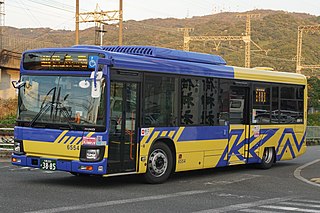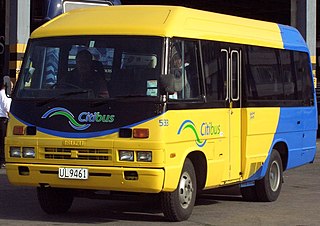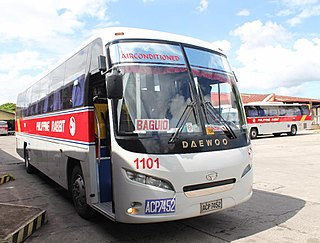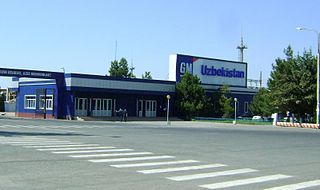
Daewoo also known as the Daewoo Group, was a major South Korean chaebol and car manufacturer.
SsangYong Motor Company is the fourth largest South Korea-based automobile manufacturer, which is owned by Indian multinational automotive company Mahindra & Mahindra Limited.

GM Korea Company is South Korea's subsidiary of multinational corporation General Motors. GMK is also the third largest automobile manufacturer. GM Korea's roots go back to the former Daewoo Motor vehicle brand which was split from its parent company, Daewoo Group, in 2001. It has three manufacturing facilities in South Korea. In addition, GM Korea provides region and brand-specific vehicle assembly kits for assembly by GM affiliates in the United States, Brazil, China, Colombia, and Mexico, and formerly in Australia and India after GM's February 2020 announcement to withdraw from all right-hand-drive markets worldwide. In 2008, GM Korea built more than 1.9 million vehicles, including CKD products. It currently produces vehicles and kits for Chevrolet and Buick that are offered in more than 150 markets on continents that don't have right-hand-drive markets. It produced vehicles and kits for Holden in Australia until the brand's demise in 2020. GM Korea also has design, engineering, research & development facilities that are involved in development for various GM products, above all small-size cars.
Tata Motors Limited, formerly Tata Engineering and Locomotive Company(TELCO), is an Indian multinational automotive manufacturing company headquartered in Mumbai, Maharashtra, India. It is a part of Tata Group, an Indian conglomerate. Its products include passenger cars, trucks, vans, coaches, buses, sports cars, construction equipment and military vehicles.

Daewoo Motors was a South Korean automotive company established in 1937 as "National Motors". The company changed its name several times until 1983 when it became "Daewoo Motors". After running into financial difficulties, it sold most of its assets in 2001 to General Motors, becoming a subsidiary of the American company and in 2011, the name "Daewoo" was definitely removed and the company renamed to GM Korea.

The SsangYong Korando is a subcompact SUV or compact crossover SUV built by the South Korean automobile manufacturer SsangYong from 1983 to 2006 and from 2010 onwards. The name Korando is a contraction of "Korea Can Do". The Korando brand is listed in the Guinness Book of Records as Korea’s longest surviving name plate.
Automobile Craiova S.A. was an automobile manufacturer located in Craiova, Romania.

The Hino Blue Ribbon (kana:日野・ブルーリボン) is a heavy-duty single-decker bus produced by Hino Motors through the J-Bus joint-venture. The range is primarily available as city bus and tourist coach. It is built by J-Bus as either a complete bus or a bus chassis.

The Isuzu Journey (kana:いすゞ・ジャーニー) is a minibus produced by the Japanese manufacturer Isuzu since 1970, and in 1973 in its current somewhat larger format. The range was primarily available as a city bus and a tourist coach.

Philippine Rabbit Bus Lines, Inc. (PRBL) is a provincial bus company in the Philippines. It was founded in 1946.

The automotive industry in Pakistan is the one of the fastest-growing industries of the country, accounting for 4% of Pakistan's GDP and employing a workforce of over 1.8 million people. Currently, there are 3,200 automotive manufacturing plants in the country, with an investment of ₨92 billion (US$560 million) producing 1.8 million motorcycles and 200,000 vehicles annually. Its contribution to the national exchequer is nearly ₨50 billion (US$300 million) . The sector, as a whole, provides employment to 3.5 million people and plays a pivotal role in promoting the growth of the vendor industry. Pakistan's auto market is considered among the smallest, but fastest-growing in Asia. Over 180,000 cars were sold in the fiscal year 2014–15, rising to 206,777 units fiscal year 2015–16. At present, the auto market is dominated by Honda, Toyota and Suzuki. However, on 19 March 2016, Pakistan passed the "Auto Policy 2016-21", which offers tax incentives to new automakers to establish manufacturing plants in the country. In response, Renault, Nissan, Proton Holdings, Kia, SsangYong, Volkswagen, FAW and Hyundai have expressed interest in entering the Pakistani market. NLC signed an agreement with Mercedes Benz for the manufacturing of Mercedes Actros trucks in Pakistan. Pakistan has not enforced any automotive safety standards or model upgrade policies. A few old models of vehicles including the Bolan and Ravi continue to be sold by Suzuki.

The Saehan Motor Company was a South-Korean car maker founded in 1976, which was born on the collaboration of Shinjin Industrial Company and the will of General Motors to introduce their products on the South Korean market. Saehan was born on the former General Motors Korea, which encountered difficulties when the South-Korean market collapsed, following the first round of oil rises in 1973. This joint-venture, 50-50 between GM and Shinjin, consisted on a car assembly plant in Bupyong, a truck assembly plant in Pusan and a foundry at Inchon. In November 1976, Shinjin Motors faced financial problems and sold its 50% stake in Saehan to the Korea Development Bank (KDB). In 1978, the Daewoo Group acquired the equity stake and management rights from KDB. The company was renamed Daewoo Motor Co. in January 1983.
Shinjin Motors or Sinjin Motors is a defunct South Korean car manufacturer.

The automotive industry in South Korea is the seventh-largest in the world as measured by automobile unit production and also the seventh-largest by automobile export volume.

Zyle Daewoo Commercial Vehicle is a South Korean manufacturer of buses and is majority owned by Young-An Hat Company, based in Busan. It was established in 2002 as a successor to previous merger, Daewoo Motor Company. These buses are primarily used for public transportation. Daewoo Bus has been in a partnership in 2006 with GM Daewoo.

Automotive industry in Ukraine was established during the Soviet times and until fall of the Soviet Union was an integral part of automotive industry of the Soviet Union. First Ukraine based motor vehicles brands were established in the late 1950s.
Saehan (SMC) BL064 is a licensed built Isuzu Journey M series.
GM Korea introduced the BU series bus in 1976 using the MAN diesel powered U engine platform. Several platforms were built in this series. In 1977, Saehan Motors took over the GM Korea bus operation. The BU series continues to be made.

Before 1992, Uzbekistan had absolutely no automotive industry, being part of the Soviet Union. In post-Soviet times, UzDaewooAuto, SamKochAvto, GM Uzbekistan new auto producing plants were built with South Korean and American help. Now that production is more than 200 thousand per year, Uzbekistan exports automobiles to Russia and other CIS countries.












